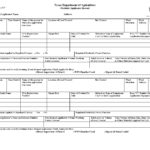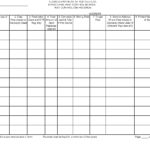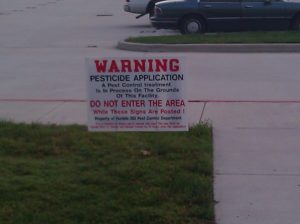 IPM Coordinators and pesticide applicators are required to keep records; however, not everyone keeps records the same and completely. Today we are going to look at what you need to maintain good records so that they can support your program and the important work you do. What you put out, when you put it out, how you apply it, who applied it, and the exact location you made that application is critical to ensuring regulators, customers and the public know exactly what you did and why.
IPM Coordinators and pesticide applicators are required to keep records; however, not everyone keeps records the same and completely. Today we are going to look at what you need to maintain good records so that they can support your program and the important work you do. What you put out, when you put it out, how you apply it, who applied it, and the exact location you made that application is critical to ensuring regulators, customers and the public know exactly what you did and why.
Application use records (who, what, when, where, why & how) are required from the U.S. EPA through each state lead pesticide agency, in TX that is the Department of Agriculture, which requires applicators to record the 1) name and address of the customer, 2) name of pesticides and/or devices used, 3) total amount applied, 4) device used and total number 5) mixing rate for formulations, 6) purpose (target pest including weeds and diseases), 7) date and time, 8) service address, 9) name and license # of person(s) in attendance as well – if you have unlicensed people working under you (3A) you must list them as well, and 10) outdoor applications require: wind direction, velocity, and outdoor temp at the location of the service address.
Who, What, When, Where, Why, and How of IPM
Who: When TDA is called out on a complaint the first thing they look for is who made the application. The rules reflect that each licensed applicator is to list their name and license number. However, what many are not doing is listing everyone who was present at the time of application. If you are training an apprentice and you don’t list them then how can you prove you gave them on the job training if they are not listed on the application use record. Who is present is critical even if that employee doesn’t stay the two years you must keep the record, because you never know when you will need that person to substantiate a claim.
What: What you do when you have identified a pest problem including the non-chemical controls aids with documenting how you used all of your IPM steps. After you have monitored and identified a pest problem or are preparing an outdoor area for future use, application use records record all the steps you thought of in your mind on paper. Name of the pesticide(s) you used, this means the trade name, EPA registration number and in some cases active ingredients, depending on how your record keeping document is set up. At the same time is the application being made using devices as well. For example, did you use a gel bait, and used straws to place the bait in hidden locations or a plastic bait station? Adding this small detail might be critical in 16 months when the client asked about a treatment made back then, can you remember back that far on what you did each day, 20 times a day?
Speaking of devices when you place out sticky cards for monitoring, rodent bait stations with snap traps, bird netting or any other device used to control, repel, mitigate or destroy a pest you must document that as well. Documentation of monitoring or scouting is a critical piece to the IPM program because it goes back to assessing a situation. How do you know if you have a pest problem if you have not had more ways than verbal complaints to aid in what you might be dealing with. At the same time, if you install devices that aid in exclusion you are also telling your client, TDA and the public you understand the principles of integrated pest management. Every step you take counts to a pest reduction so document it.
When: The date and time you make any type of pesticide application is not just required, but also aids in future defense of proposed complaint. Most applicators are great at recording the date, it’s the time many question as there is no note. However, if you are making an outdoor application on school grounds and it requires that students not be present for 4 hours after the application, then you would need a time to establish that parameter. What about those times when the label directions states “when dry”, Dr. Don Renchie, always recommends that 4-hour reentry time be used to aid in ensuring the public is protected. As pesticide applicators that is the ultimate challenge, ensuring what you do causes no harm to human, animal or another non-target entity like water.
Where: This simple step is the most critical and yet this is where most mistakes are made. Most applicators will use the customer address, which is fine when it’s a residential property; however, the bigger the property the more important it is to document exact physical locations. Inside an office building, school campus, nursing home, hospital, childcare or any other facility that people occupy it’s important to document where you made a treatment. Did you only make a treatment in the kitchen area or breakroom, did you only need to treat for something in an atrium? Were you placing traps up in a false ceiling area? Outdoors are you on the athletic field or are you on a playground? Did you take care of shrubs and trees, did you go close to the community garden? While some of this is not completely required by TDA, many of the municipalities are adopting rules about what can be done on their public lands so it’s important to know all the rules, not just the TDA rules. Nothing prohibits the applicator from using a map to illustrate where an application was made.
Why: This action is mission critical, why did you use the product you used, and can you justify that in a court of law? When you listen to the regulators discuss those that violate the pesticide label or misuse the product, it all comes down to justifying why the applicator did what they chose to do. While the rules state you can put ants, termites, weeds, fungal disease, rodents, etc. as the target pest, the principals of IPM state you should properly identify the pest and call it by name on the record. When I see ants, termites, and weeds to name a few, I then look at what is being applied and wonder is this the right product for the job? Ants is one example of a nuisance pest that requires specialized insecticides to control them. When we conduct AgriLife Extension trainings we always stress the use of specific species. To continue with the ant example, on the application use record if you were using a fire ant bait product, I would expect to see the pest listed as fire ants, not just ants. The same would go for herbicide treatments, try to list the target weeds you are trying to control it just might aid in the future when a council or school board member asks a question.
How: Pesticide applications just don’t happen – someone has to make the actual application, so how was that done? Did you make a broadcast bait application using a Herd spreader? Did you use a fogger, crack and crevice, ready to use sprayer, how did you make the application of the chemical you listed on your service ticket? Again, if a lawyer was looking at your records and you were on the witness stand, can you defend the document they are looking at?
Most of don’t think we will ever have to defend the actions we take when we make a pesticide application, and yet the times they are changing, and this article is to remind everyone to stay the course.
Which leads to the changing of times – paper or digital?
 The Texas Department of Agriculture does require all applicators to keep records, I have supplied the images of the agricultural use and structural use sample forms you can find on the TDA website. However, what has been asked of me numerous times, can we keep this information in an Excel spreadsheet (mostly non-commercial ask this question) or even the industry online or in the cloud. Until this past December I was a big supporter of all things digital, then I heard of one City (New Orleans) and one pest control company that was
The Texas Department of Agriculture does require all applicators to keep records, I have supplied the images of the agricultural use and structural use sample forms you can find on the TDA website. However, what has been asked of me numerous times, can we keep this information in an Excel spreadsheet (mostly non-commercial ask this question) or even the industry online or in the cloud. Until this past December I was a big supporter of all things digital, then I heard of one City (New Orleans) and one pest control company that was  attacked using ransomware. Both entities lost EVERYTHING and had to start over. Because emails were compromised some digital accounts had to be scrubbed. What saved some was the belief of backing up data on a separate hard drive and putting that in a secure location. Because the other threat is fire and flood, if you lost the computer, is that data safe someplace else. Take this as a cautionary tale to ensure all of your records no matter what they are, are protected in the event of a natural disaster or corruption of the malicious type.
attacked using ransomware. Both entities lost EVERYTHING and had to start over. Because emails were compromised some digital accounts had to be scrubbed. What saved some was the belief of backing up data on a separate hard drive and putting that in a secure location. Because the other threat is fire and flood, if you lost the computer, is that data safe someplace else. Take this as a cautionary tale to ensure all of your records no matter what they are, are protected in the event of a natural disaster or corruption of the malicious type.
School IPM coordinators when it comes to maintaining your IPM records and you use a work order software that does not allow you to easily collect the application use details. You will need to keep the detail records as described above; however, you can take that detailed record and attach to your work order software for district wide recordkeeping. When I work with schools one-on-one, this is always a tricky area, as each district’s work order system is slightly different. However, the principles remain the same. Someone either created a “problem” or it’s a “preventative maintenance task”. You the technician are tasked with closing the work order. Here is the critical piece of the IPM program, when you stumble across a problem as you are working on the “work order” is it your responsibility to fix it (let’s use door sweep) or must you turn that over to another craft? This is where it’s extremely important to have an IPM team. All of the members of this team may not perform the day-to-day operations of pest management; but they do aid by ensuring that sanitation, cultural, and physical controls are maintained. So who’s responsibility is it to fix the door sweep, make sure that’s part of your program as well.
Indoors versus Outdoors tips to remember
Indoors: Posting or prenotification of what and when you plan to make an application has been in TX law since the mid 1980s. The 48-hour notice was not meant to be a burden on the pest control industry, it was designed to allow the public to know when a chemical might be applied. Posting this sign in areas of common access is all that is required by the Dept. of Ag. Check out this newsletter story for more on posting

A sign like this can alert parents, students, and teachers that an area has been treated for insects, weeds, or plant diseases.
Outdoors: Currently the only group who needs to post every time a pesticide application is made outdoors is public schools. The School IPM rules require that students are not present or not expected to be present within ten (10) feet of application site. The treated area must be clearly posted at all entry points with a sign, or secured using a locking device, a fence or other practical barrier such as commercially available barrier caution tape, or periodically monitored to keep students out of the treated area until the allowed reentry time. While this is for public schools, again I have seen cities and municipalities adopt similar ordinances as way to protect the citizens of their community, so know your local rules.
All applicators need to be aware of wind direction, velocity, and outdoor temp. When you listen to the notice of violation reports especially when an herbicide has been involved this one always comes up. Everyone who is making an application is required to follow the label on the product and TDA rules. Does the label require a buffer zone? Which way is the wind blowing and how fast, can the product you are using be carried on a breeze that lands on the neighbor’s property and damages one of their plants? Know your label, where your PPE and document everything you need to be complaint and answer the public questions when the time presents itself.
Remember as the licensed applicator you are responsible for your actions, yes, your supervisor can direct your applications as well. But if you are unsure, remember read the label first and if you need help AgriLife Extension and the Department of Agriculture or other agencies can assist you.
Safety First.

 .
.